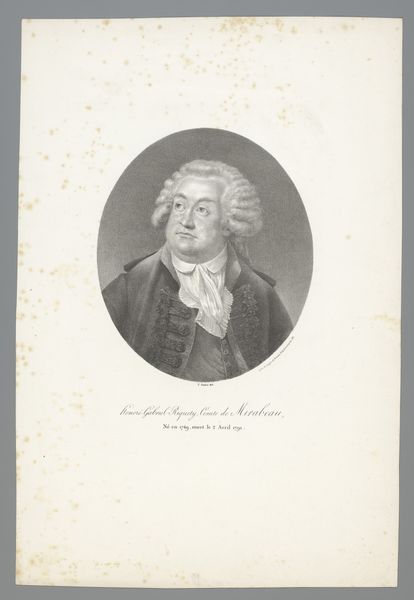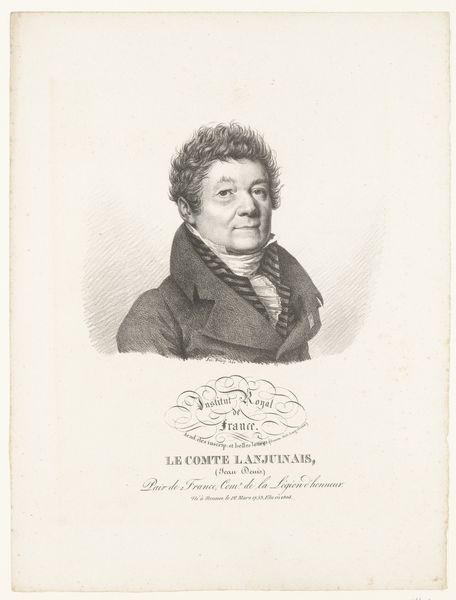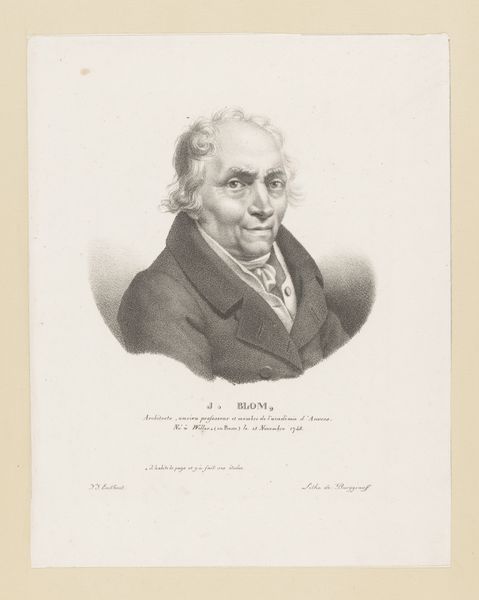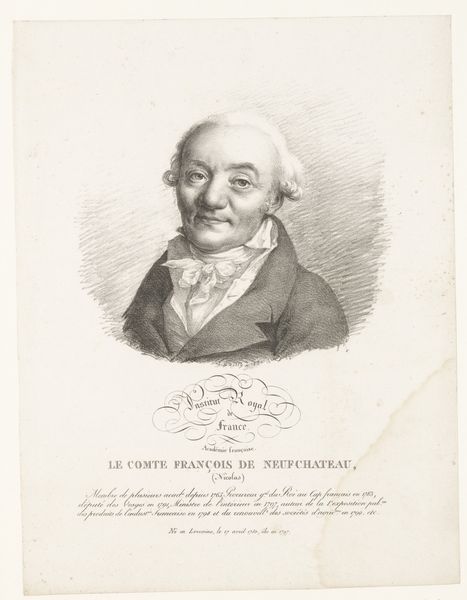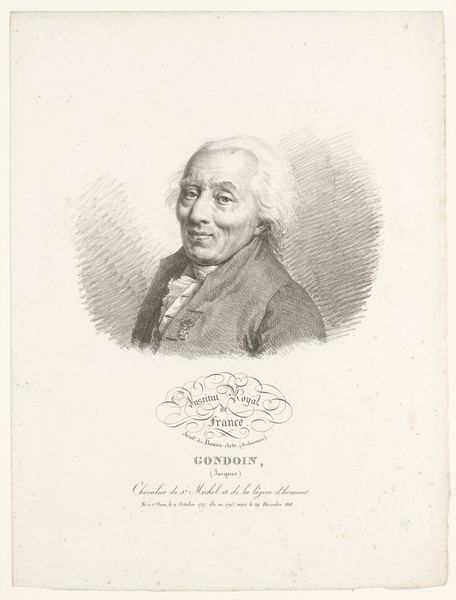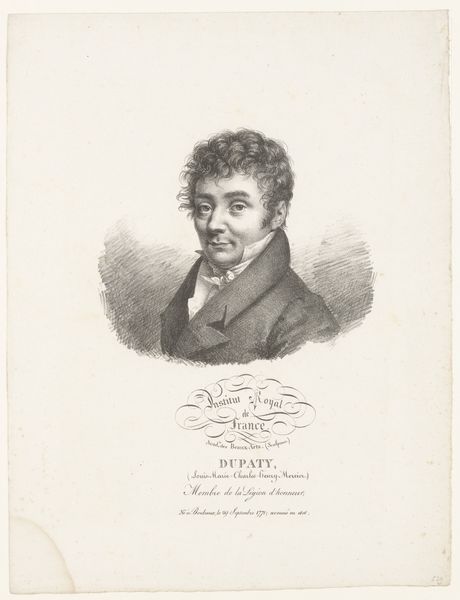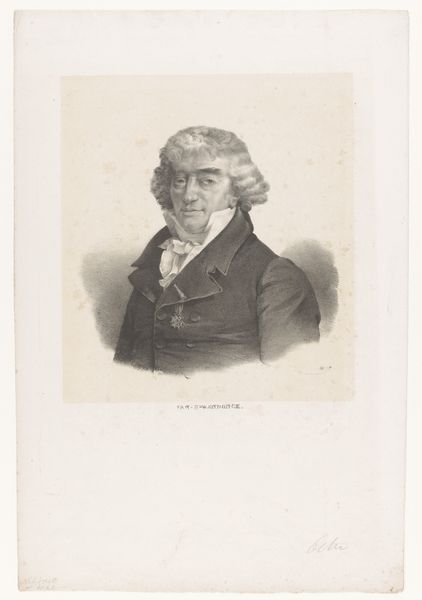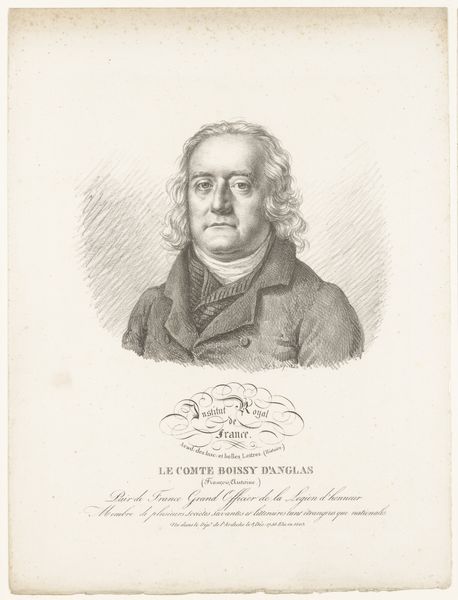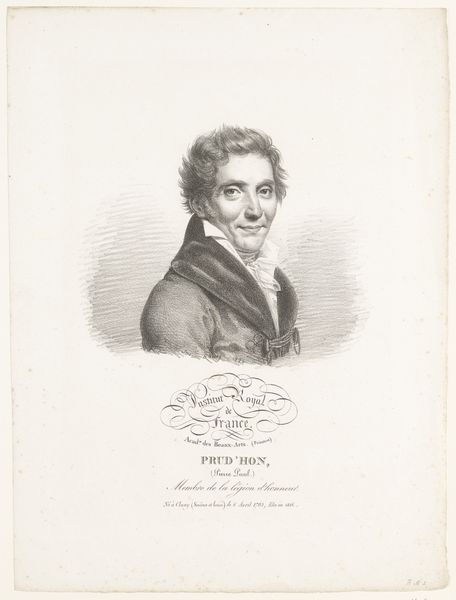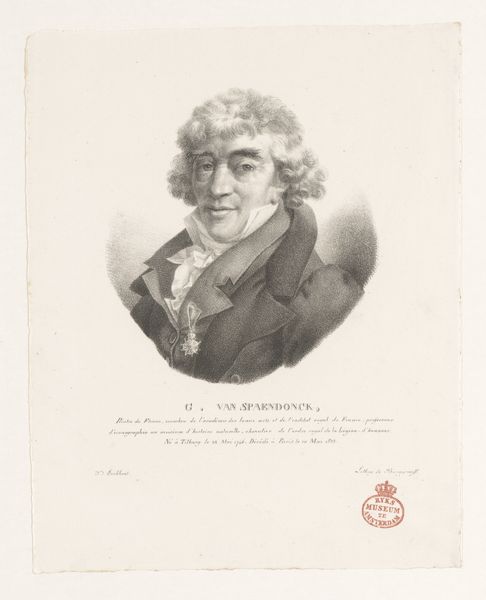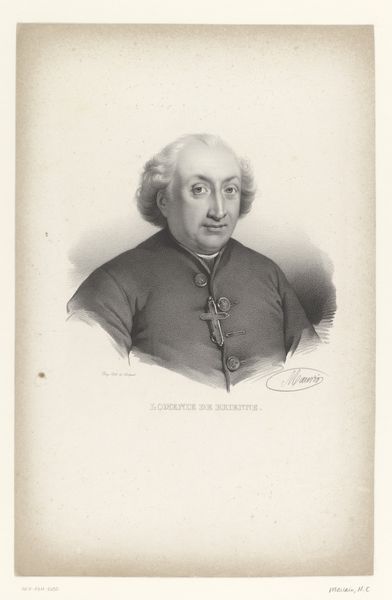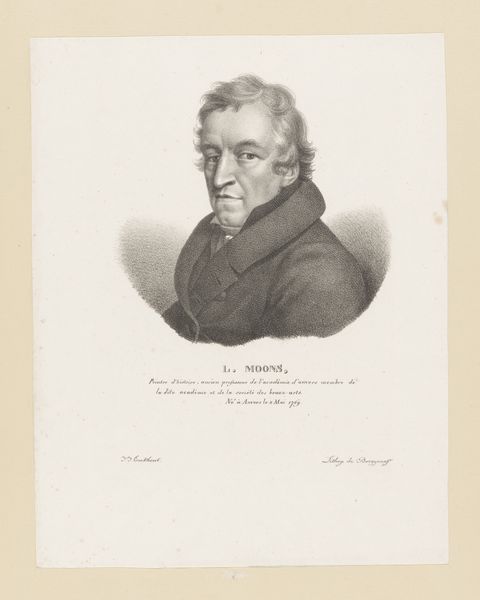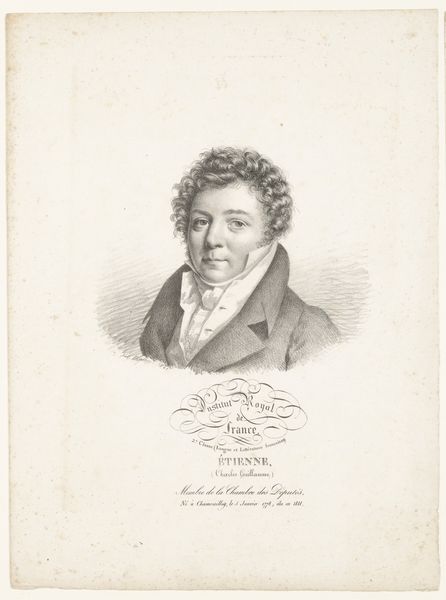
print, engraving
#
portrait
#
neoclassicism
# print
#
academic-art
#
engraving
Dimensions: height 361 mm, width 272 mm
Copyright: Rijks Museum: Open Domain
Editor: This is an engraving from 1820 by Julien-Léopold Boilly titled "Portrait of the Painter Jean-Baptiste Regnault." It's quite formal, even a bit severe, don't you think? What strikes you when you look at it? Curator: The severity you perceive is, I think, deliberate, meant to convey the sitter's status within the French art world and larger power structures. This piece demands we unpack the visual language of power and status in the Neoclassical period, especially considering the shifting political landscapes post-Revolution. Who gets to be remembered, and how? This portrait certainly immortalizes Regnault. How does the text below the portrait function in that immortalization, do you think? Editor: I see, the inscription "Le Chevalier Regnault" definitely elevates him. But how does an engraving, as a more accessible medium, play into ideas of elitism and access to art? Curator: Exactly! It’s a fascinating tension. Engravings allowed for wider distribution of images, democratizing access in a way. However, who was being represented, and whose gaze was centered, remained largely within elite circles. Was this accessibility truly inclusive, or was it simply expanding the reach of a singular, dominant narrative? And how might Regnault's position, as both subject and powerful member of the *Académie des Beaux-Arts,* impact the artist's portrayal of him? Editor: That makes so much sense. It’s like, on the surface it seems democratic, but it actually reinforces the established order. The work becomes less about one person, but about all of the factors that helped put them in power. Curator: Precisely! And by examining these tensions, we can better understand how art functions not just as aesthetic objects but as powerful tools in shaping social and political realities. Editor: That's given me a completely new way to view portraiture. Thanks for sharing!
Comments
No comments
Be the first to comment and join the conversation on the ultimate creative platform.
